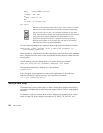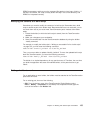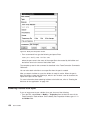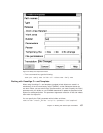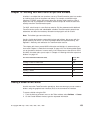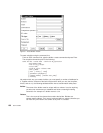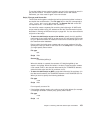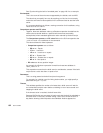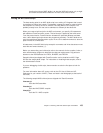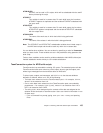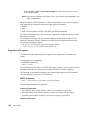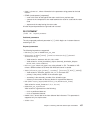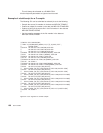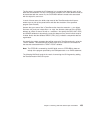See “Synchronizing the build of unrelated parts” on page 196 for an example.
Environment
This is the name of the environment supported by the builder, such as MVS.
The value that you specify here can be anything you like, but it must exactly
match the environment value specified in the command used to start the build
server.
It is recommended that you follow a naming convention for this attribute, using
values such as os2 and mvs.
Comparison operator and RC value
Together, these two attributes make up a Boolean expression that defines the
criteria used to decide whether a specific build event was successfully
accomplished, when evaluated against the value returned by the build script.
The Comparison operator and RC value fields on the GUI correspond to the
-condition and -value attributes in the command.
The values allowed for these operators:
v Comparison operator are as follows:
– EQ or == - Equals
– LT or < - Less than
– LE or <= - Less than or equals
– GT or > - Greater than
– GE or >= - Greater than or equals
– NE or != - Not equal to
v RC value can be any positive integer.
An example of a Boolean expression formed from these two attributes is
return_value LE 4
.
This expression means that the build event is considered a success if the build
script returns a value less than or equal to four.
Parameters
This is a string passed to the build script as its argument.
For example, for a builder used for linking load modules, you might specify a
parameter string of list,test.
Timeout
This attribute specifies the number of minutes that a build server will wait for
an invoked build script to return before concluding an error has occurred and
stopping the build event.
If the timeout value is reached, the build event fails.
Because MVS builds are processed in batch mode but the build is submitted to
the build server in real time, consider writing a user exit to check the time of
day before allowing a build request to be submitted. Another approach to
162 User’s Guide



